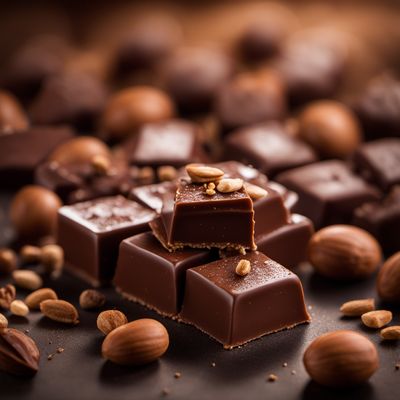
Ingredient
Chocolate and similar
"Decadent Delights: Exploring the World of Chocolate and Its Kin"
Chocolate and similar ingredients, such as cocoa powder and cacao nibs, are derived from the cacao bean. They are characterized by their deep, complex flavors, ranging from bitter to sweet, and their smooth, velvety textures. Chocolate can come in various forms, including bars, chips, and powders, each with its own unique applications in the culinary world. Its appearance can vary from dark brown to lighter shades, depending on the type and percentage of cacao used.
Origins and history
The cacao tree, native to the tropical regions of Central and South America, is where chocolate finds its roots. The ancient Mayans and Aztecs were among the first to cultivate cacao and use it in their rituals and beverages. After the Spanish conquest, chocolate was introduced to Europe, where it gained popularity as a luxury item. Over time, chocolate production techniques evolved, leading to the creation of various chocolate types and forms.
Nutritional information
Chocolate and similar ingredients are a good source of antioxidants, iron, and magnesium. They also contain moderate amounts of fat and sugar. A 100g serving of dark chocolate typically provides around 600 calories.
Allergens
Chocolate may contain traces of milk, soy, and nuts, making it a potential allergen for those with sensitivities or allergies to these ingredients.
How to select
When selecting chocolate, look for high-quality options with a glossy appearance and smooth texture. Avoid chocolate that appears dull or has a grayish hue, as it may indicate poor quality or improper storage. Opt for chocolate with a higher percentage of cacao for a more intense flavor.
Storage recommendations
To maintain the freshness and quality of chocolate, store it in a cool, dry place away from direct sunlight. It is best to keep chocolate tightly wrapped or sealed to prevent moisture absorption and the development of off-flavors.
How to produce
While producing chocolate from scratch requires specialized equipment and knowledge, amateur enthusiasts can experiment with making their own chocolate-based treats, such as truffles or chocolate bark, by melting and tempering store-bought chocolate.
Preparation tips
When using chocolate in recipes, it is important to handle it with care to prevent overheating or burning. To melt chocolate, use a double boiler or microwave in short intervals, stirring in between. Incorporate chocolate into desserts, baked goods, or even savory dishes like mole sauce for a delightful touch of indulgence.
Culinary uses
Chocolate and similar ingredients are widely used in desserts, such as cakes, cookies, and mousses. They can also be used to make hot chocolate, ganache, or as a topping for ice cream. Additionally, chocolate can be incorporated into savory dishes, like chili or braised meats, to add depth and complexity.
Availability
Chocolate and similar ingredients are commonly available worldwide, with major producers including countries like Belgium, Switzerland, and the United States.




